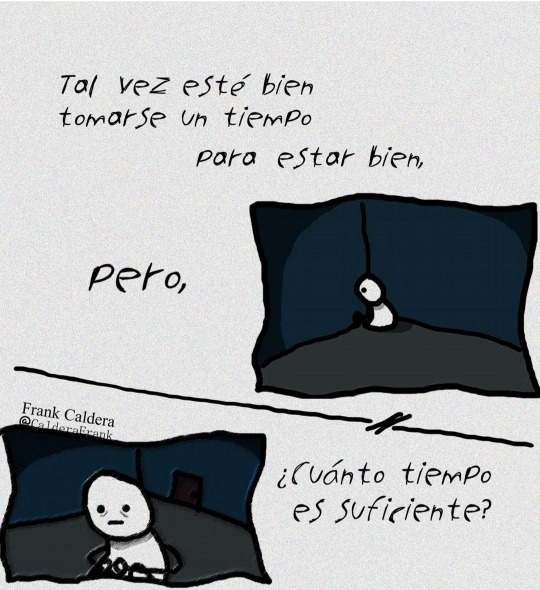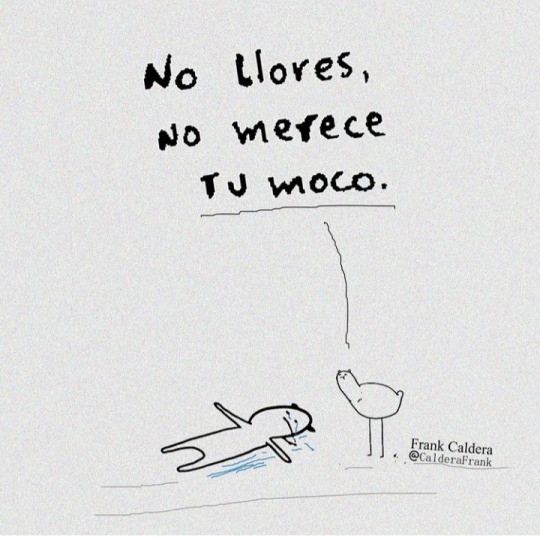#frank caldera
Text

#quotes#pienso en versos#dilo con dibujitos#ilustradores#frank caldera#besarse#besar#tu cara#estúpida#antojo#insomnio#besitos#empalagosa#dulces
370 notes
·
View notes
Text

Caldera
11K notes
·
View notes
Text







"the judas goat" the punisher / "something beautiful" better call saul
#better call saul#bcs#bcsedit#the punisher#fythepunisher#frank castle#nacho varga#david lieberman#david micro lieberman#marco salamanca#dr caldera#curtis hoyle#blood#blood tw#gore#gore tw#beet's gifs#my edits#wow thats a lotta tags. ill rb later with my detailed thoughts on this bc i typed them out and theyre really long lol#happy slurp his sidewound saturday everyone
55 notes
·
View notes
Text
Cottonwood Fluff
Summary: Azula and Sokka go for a walk in the Earth Kingdom countryside.
Note: Really short story for Sokkla Saturday (Combined this prompt and the last).
Spring in the Earth Kingdom is a far cry from spring in the Fire Nation. It isn’t so sizzling hot but it is still teeming with nature. She likes the daisies and dandelions the best. How they spot the rolling countryside with vast pops of white and yellow. Little bursts of sunlight. She also enjoys the cottonwoods and the fluff that they put in the air, even though it makes her nose tingle and her eyes water. Sokka says that she might be allergic to pollen.
Most of the time she doesn’t mind. Watery eyes and tingling is a small price to pay to feel the earth; the grass between her toes, petals between her fingers, and–when she is in the right mood–dirt and mud on the soles of her feet.
It is good for her, she thinks, to smell dew on the grass and honeysuckle in the early morning. She certainly hasn’t felt as stressed and distraught since Sokka started taking her here. To be frank, she isn’t entirely certain of where here is, or if the little town even has a name.
It is, afterall, just a cluster of houses. Maybe ten or eleven of them and then that path that leads to Gaoling.
Sunrises and mornings are quiet here.
She likes to take her tea with honey and chamomile and listen to the grasshoppers chirp and the bees buzz. She likes to listen to the wind shake the tall grasses, barely, and branches. The Earth Kingdom is full of grains and oats. Sometimes, when she is lucky, Sokka gets some peanut butter and some honey and bakes those grains and oats into a little snack for the both of them to eat on the porch or by that pond with the rickety little bridge.
She swears that one day it is going to collapse on the both of them and they’ll have to walk all the way home drenched.
The creek likes to gurgle, it isn’t all that deep but it is long and it meanders alongside the path to Gaoling. The one that she and Sokka walk often. Hand in hand without much urgency to get anywhere in particular.
Sometimes Azula misses the hustle and haste. But these lazy afternoons have treated her so well. So she will take them until she truly starts to itch for Caldera City’s rush and clamor. That busy life that keeps her mind sharp and her soul entertained.
Today Sokka carries her on his back while he babbles about nothing in particular. The cottonwoods are shedding so much fluff that it could be a snowy winter. Except the grass is vibrant green and the hummingbirds sing and the woodpeckers tap, tap, tap.
She is starting to doze off. This isn’t particularly uncommon. If she gets relaxed enough she can nod off in seconds.
“Nice day, isn’t it?” Sokka comments.
“Hmm?” She mumbles. “Yeah.” It is a warm day. Blue skies. Rolling clouds. Rays of sunlight that cut through them and kiss her exposed shoulders. Most days are nice days, she thinks. Which is refreshing considering how many perfectly lovely days had been gray in her mind some not too distant time ago.
“How’s this spot?”
Azula looks around. He has found them a clearing ringed by dandelions that have yet to lose their wispy white crowns. There are a few fallen logs and several clusters of mushrooms. It smells like moss and pine.
She hops down from his back. “It’s nice, Sokka.” She wouldn’t mind just sitting here in silence for a little while. Perhaps hours even. That’s what they usually do. She wouldn’t have it any other way.
They have gotten to a point where they don’t need to talk. They only need to be in each other’s company in the earth’s embrace, counting clouds and robin’s nests until the sun begins to set.
And all feels right in Azula’s world.
17 notes
·
View notes
Text

Frank Caldera
#excusasbaratas#pensamientos#citas#textos#realidad#notas#frases en español#latinoversos#escritores#chico#arte#diseños#agosto2022
146 notes
·
View notes
Text
Day 1 - Melting/Rain
For Maiko Week 2022 organized by @idonthatemaiko
Raindrops pattered on the dry cliffside pathway, water streaming down the way like a makeshift waterfall. The pair made no move to leave.
“We just had to come up here, didn’t we?”
Zuko cringed inwardly at his poor judgement. Gray clouds had hung over the blue horizon as he and his girlfriend ascended the slopes of the caldera.
The cliffs, their regular haunt, had become a place of solace. Far from the Royal Guard ordered to shadow Zuko. Away from the curious citizens more than eager to catch a glimpse of the returned prince. No rules, no rigidity, no Azula.
But plenty of rain today. Oops.
“I really thought it would bypass us, I’m sorry,” he murmured into her hair.
Zuko sat up from the blanket they lounged on and shed his outermost robe. Calloused hands passed the garment to Mai.
Mai deadpanned up at him from her seated position, “What am I supposed to do with this?”
A Deadpan Mai, Zuko learned, could quickly lead to a Cranky Mai. Not to be confused with Hangry Mai. Deadpan Mai wielded sarcasm as expertly as she did her knives. Cranky Mai turned to insults that went straight for the jugular. Worst of all, Hangry Mai turned into…a monster. Best to avoid all of them, if possible.
He shrugged, the fabric flowing in the salty storm breeze. “Hold it over your head, maybe? To stop the rain from ruining your makeup…”
The knife-thrower ran a pale finger over her cheeks, the tip coming up black from kohl and mascara that now streamed down her face. Her mauve lipstick was in the beginning stages of running as well.
She sighed, “It’s too late for that now. Come to my place to dry?”
Zuko perked up as he reached a better solution. He searched his mussed-up robe for a corner, attempting to dab the ruined makeup from his girlfriend’s face. Mai resigned under his ministrations, hoping she could at the very least stride through the capitol without bearing the resemblance of a circus clown.
One look at Zuko’s furrowed eyebrow let her hope down. The black streaks had turned into obsidian globs on her alabaster skin. She batted his hands away before standing up huffily.
“Just take me home.” Mai averted her gaze and began walking, discomfited with her appearance.
“Home, yeah. Going.” The prince scrambled to fold their blanket and grab their shared canteen of water.
Mai had walked far enough ahead that Zuko had to jog to catch up. Fat raindrops flew diagonally from the thundering clouds above. Wind blustered and ruffled their robes. Zuko reached out his hand to hold hers. A tube-shaped object in her sleeve pocket bumped against his thumb. Quickly he recognized it to be her lipstick vial.
His fingers snatched the cool metal from its confines.
“I don’t want more of that right now.” Mai walked on, leaving Zuko in the middle of a low-traffic street.
Hastily, Zuko unscrewed the tube and did not think twice before smearing the mauve cream all over his good eye. Uncle had frank discussions with Zuko during their time away. Women are tricky and tend to take more stock into appearances than men. In a way not entirely comical, the lipstick shade bore an uncanny resemblance to his scar tissue.
Mai stopped in her tracks when Zuko caught up to her once more. He slipped her lipstick tube back in its pocket.
“Are you stupid?” Her tone was genuine.
“Now they’ll stare at both of us, not just you.”
She laughed despite herself. “Let’s hurry.”
Drenched to the bone, they hurried to Mai’s vacant home. Thankfully, the streets weren’t as busy with the downpour. Still some passersby gasped and gaped at the melty-faced duo.
Mai didn’t hate the rain so much after that day.
30 notes
·
View notes
Text
Events 4.23 (before 1950)
215 BC – A temple is built on the Capitoline Hill dedicated to Venus Erycina to commemorate the Roman defeat at Lake Trasimene.
599 – Maya king Uneh Chan of Calakmul attacks rival city-state Palenque in southern Mexico, defeating queen Yohl Ik'nal and sacking the city.
711 – Dagobert III succeeds his father King Childebert III as King of the Franks.
1014 – Battle of Clontarf: High King of Ireland Brian Boru defeats Viking invaders, but is killed in battle.
1016 – Edmund Ironside succeeds his father Æthelred the Unready as King of England.
1343 – St. George's Night Uprising commences in the Duchy of Estonia.
1348 – The founding of the Order of the Garter by King Edward III is announced on St. George's Day.
1500 – Portuguese explorer Pedro Alvarez Cabral reaches new coastline (Brazil).
1516 – The Munich Reinheitsgebot (regarding the ingredients of beer) takes effect in all of Bavaria.
1521 – Battle of Villalar: King Charles I of Spain defeats the Comuneros.
1635 – The first public school in the United States, the Boston Latin School, is founded.
1655 – The Siege of Santo Domingo begins during the Anglo-Spanish War, and fails seven days later.
1660 – Treaty of Oliva is established between Sweden and Poland.
1661 – King Charles II of England, Scotland and Ireland is crowned in Westminster Abbey.
1724 – Johann Sebastian Bach leads the first performance of his cantata Du Hirte Israel, höre, BWV 104, illustrating the topic of the Good Shepherd in pastoral music.
1815 – The Second Serbian Uprising: A second phase of the national revolution of the Serbs against the Ottoman Empire, erupts shortly after the annexation of the country to the Ottoman Empire.
1879 – Fire burns down the second main building and dome of the University of Notre Dame, which prompts the construction of the third, and current, Main Building with its golden dome.
1891 – Chilean Civil War: The ironclad Blanco Encalada is sunk at Caldera Bay by torpedo boats.
1918 – World War I: The British Royal Navy makes a raid in an attempt to neutralise the Belgian port of Bruges-Zeebrugge.
1919 – The Estonian Constituent Assembly is held in Estonia, which marks the birth of the Estonian Parliament, the Riigikogu.
1920 – The Grand National Assembly of Turkey (TBMM) is founded in Ankara. The assembly denounces the government of Sultan Mehmed VI and announces the preparation of a temporary constitution.
1927 – Cardiff City defeat Arsenal in the FA Cup Final, the only time it has been won by a team not based in England.
1935 – The Polish Constitution of 1935 is adopted.
1940 – The Rhythm Club fire at a dance hall in Natchez, Mississippi, kills 198 people.
1941 – World War II: The Greek government and King George II evacuate Athens before the invading Wehrmacht.
1942 – World War II: Baedeker Blitz: German bombers hit Exeter, Bath and York in retaliation for the British raid on Lübeck.
1945 – World War II: Adolf Hitler's designated successor, Hermann Göring, sends him a telegram asking permission to take leadership of Nazi Germany. Martin Bormann and Joseph Goebbels advise Hitler that the telegram is treasonous.
1946 – Manuel Roxas is elected the last President of the Commonwealth of the Philippines.
1949 – Chinese Civil War: Establishment of the People's Liberation Army Navy.
0 notes
Text
5/14 おはようございます、Thelma Houston / Any Way You Like It T6-345S 等更新しました。
Elmo Hope / with Frank Butler and Jimmy Bond sj616
John Lewis / Grand Encounter Pj1217
Johnny Hodges / Perdido mgv8179
Milt Jackson / the Jazz Skyline Mg12070
Paul Gonsalves / Tell it the Way It is as55
Pat Bowie / Feeling Good Pr7437
Abbe Lane / The Lady In Red Lpm1688
Ralph Sharon / Ralph Sharon bcp41
Andre Previn / plays Vernon Duke s7558
Jackie Mclean / 'Bout Soul Bst84284
VA / Modern Jazz IV-V Anthology 64 lpx7279-80
Irakere / Irakere 35655
Caldera / Dreamer ST-11952
Nelson Gonzalez / Understanding Latin Rhythms Vol. II LPV422
Meta Roos / & Nippe Sylwens Band click2878
Curtis Mayfield / OST Short Eyes cu5017
Thelma Houston / Any Way You Like It T6-345S
Gang Of Four / Songs Of The Free EMC3412
VA Cajun Fais Do-Do F5004
Kinks / Face to Face nspl18149
~bamboo music~
https://bamboo-music.net
[email protected]
530-0028 大阪市北区万歳町3-41 シロノビル104号
06-6363-2700

0 notes
Text
[caption id="attachment_70862" align="aligncenter" width="1000"] María Aleman .César Rondón Presidente de Fundaexar. Robert Solozano Director Nacional de Fundaexar, Douglas Urribarrí, Guillermo Larreal, certificaron el reconocimiento durante la ceremonia. Foto Elpepazo.[/caption]
Hebert Colina M.
Un total de 32 personalidades del deporte zuliano, ex atletas, dirigentes,anotadores, entrenadores, entre otros, fueron reconocidas como Glorias del Deporte por la Fundación Glorias Deportivas, Frank Riera, director técnico del IRDEZ, en una ameno encuentro cuya subsede Zulia de las Glorias motorizó de manera efectiva lo concerniente para que se cristalizara este evento que representa justicia social.
El acto fue realizado en una Asamblea con la presidenta de Funglove, María Aleman .César Rondón presidente de la Fundación de Ex Atletas de Alto Rendimiento,(Fundaexar). Robert Solozano Director Nacional de Fundaexar y otros miembros Nacional, así como también Douglas Urribarrí y Guillermo Larreal por el capítulo Zulia en la Villa Deportiva del Zulia.
[caption id="attachment_70864" align="aligncenter" width="347"] Luis Urribarrí, el único reconocido como dirigente como Gloria Deportiva del Zulia. Foto Cortesía[/caption]
"Esto no es más que el reconocimiento oficial para tanto ex atleta que dio sus mejores años en representación de las regiones y el país. Estas personas recibirán apoyo social y económico y desde todo punto de vista y ahí estaremos para ello", dijo María Alemán, de Funglove.
Fue un acto sencillo donde vimos de nuevo esa camardería que caracteriza a la comunidad deportiva del Zulia, entre quienes pudimos apreciar a Aura Prieto, Jesús "Cuervo" Nava, Lino Conell, Marcos Borregales, quien solicita ayuda para operarse de la próstata y un marca paso para su corazón.
También al campeón mundial del wushu, Lic.Oswaldo Caldera, Douglas Urribarri, presidente de las Glorias Deportivas Zulia y el secretario general, Guillermo "Memo" Larreal, Noris Arteaga, Eudo "Memín" Herrera, y muchos otros que se nos escapan y que, a pesar de sus años maduros, siguen dando lo mejor de sí por el deporte zuliano.
Para recibir en tu celular esta y otras informaciones, únete a nuestras redes sociales, síguenos en Instagram, Twitter y Facebook como @DiarioElPepazo
El Pepazo
0 notes
Text
VIRGINIA MAESTRO ..en este orden de COSAS o de la FALSA MORAL DEL DINERO y/o EL SEXO como algo SATANIZADO Y ENDEMONIADO.. q te parece q FranK SINATRA se casará con "MIA" Farrow q era 30 años menor cuando debutó en Cine en LA SEMILLA DEL DIABLO (ROSE MARY'S BABY) tras la serie televisiva LA CALDERA DEL DIABLO y la cual luego se casó cn WOODY ALLEN al q acuso de INCESTO con sus hijastras koreanas casándose con una de ellas



0 notes
Text

44 notes
·
View notes
Video
Desde un rincón de Salcedo mi Colega Frank demostrando que el sabe mover la caldera. guayyyyyy https://www.instagram.com/p/CeCVBI9AI5l/?igshid=NGJjMDIxMWI=
0 notes
Text

Créditos: Frank Caldera
#citas#libros#escritos#tristeza#dias tristes#citas tristes#desamor#amor propio#inspiraci?n#dark#juventud#frases tristes#notas tristes#estoy triste#tristezas#textos tristes#noches tristes#me siento triste#soledad#citas de dolor#notas de dolor#frases de dolor#dolor profundo#ansiedad#depresión
21 notes
·
View notes
Photo

Tonga eruption On January 15, the volcano Hunga Tonga-Hunga Ha’apai devastated the nation of Tonga. The eruption triggered tsunamis as far afield as the Caribbean and generated atmospheric waves that travelled around the globe several times. Meanwhile, the volcano’s plume shot gas and ash through the stratosphere into the lower mesosphere. Just two months after the eruption, geologists have put together a preliminary account of how it unfolded. UC Santa Barbara’s Melissa Scruggs and emeritus Professor Frank Spera were part of an international team of researchers that published the first holistic account of the event in the journal Earthquake Research Advances. The authors think that an eruption the day before may have primed the volcano for the violent explosion by sinking its main vent below the ocean’s surface. This enabled molten rock to vaporize a large volume of seawater, intensifying the volcanic eruption the very next day. “This is definitely, without a doubt, the largest eruption since Mt. Pinatubo in 1991,” said corresponding author Scruggs, who studies magma mixing and eruption triggering mechanisms, and recently completed her doctorate at UC Santa Barbara. She compared January’s event to the 1883 eruption of Krakatoa, which was heard 3,000 miles away. Hunga Tonga-Hunga Ha’apai (HTHH) is a stratovolcano: a large, cone-shaped mountain that is prone to periodic violent eruptions, but which usually experiences milder activity. It’s one of many along the Tofua Volcanic Arc, a line of volcanoes fed by magma from the Pacific Plate diving beneath the Indo-Australian Plate. Heat and pressure cook the rocks of the descending plate, driving out water and other volatiles. That same water decreases the melting temperature of the rock above, leading to a chain of volcanoes about 100 kilometers from the plate boundary. A submerged danger The islands of Hunga Tonga and Hunga Ha’apai — after which the volcano is named — are merely the two highest points along the rim of the caldera, or central crater. Or they were, until the eruption blew most of the islands sky high. Scruggs first heard about the eruption as she scrolled through her Twitter feed while getting ready for bed. “I saw a GIF of the satellite eruption, and my heart just stopped,” she said, pausing to find her words. She immediately knew that the event would cause massive devastation. “The scariest part was that the entire country was cut off, and we didn’t know what had happened.” She was already messaging other volcanologists as the events unfolded, trying to understand the images that satellites had so clearly captured. “We really just set out to try to understand what happened,” Scruggs said. “So, we gathered all the information that we could, anything that was available within the first few weeks.” The authors drew on whatever resources they could find to quickly characterize this eruption, including publicly available data, videos and even tweets. Using a variety of data sets, the team calculated that the January 15 event began at 5:02 p.m. local time (0402 ±1 UTC). The U.S. Geological Survey recorded a seismic event around 13 minutes later at the vent location. The first two hours of the eruption were particularly violent, with activity fading after about 12 hours. But eruption activity had actually started all the way back on December 20, 2021. And before that, the volcano had erupted in 2009 and again in 2014 and 2015. Scruggs believes these earlier episodes are key to understanding the violence behind HTHH’s recent eruption, perhaps related to changes in the magma plumbing system at depth or the chemistry of the magma over time. Hunga Tonga and Hunga Ha’apai used to be separate islands until they were united by eruptions from the volcano’s main vent, which created a land bridge. “This island was just born in 2015,” said Scruggs. “And now it’s gone. Were it not for the satellite era, we would not have even known it ever existed.” On January 14, 2022 an explosion from the main vent razed this connection, sinking the vent beneath the ocean’s surface. “Had that land bridge not been taken out, the January 15 eruption might have behaved just like the day before because it would not have had that excess seawater,” Scruggs remarked. A staggering explosion Same volcano, one day’s difference: On Friday the vent was above the water, and by Saturday it was below. “That made all of the difference in the world,” Scruggs said. The team believes that the seawater played a large part in the violence and force behind the Jan. 15 eruption. Much like a bottle rocket, an eruption of this scale takes the right ratio of water and gas to provide the force to send it skyward. And it took off like a rocket, too. “It went halfway to space,” Scruggs exclaimed. The ash plume shot 58 kilometers into the atmosphere, past the stratosphere and into the lower mesosphere. This is more than twice the height reached by the plume from Mt. Saint Helens in 1980. It was the tallest volcanic plume ever recorded. A truly staggering amount of lightning also accompanied the eruption. The authors suspect that vaporizing seawater caused the lava to fragment into microscopic ash particles, which were joined by tiny ice crystals once the steam froze in the upper atmosphere. The motion, temperature change and size of the particles generated incredible amounts of static charge separation that flashed above the eruption. For the first two hours of the eruption, about 80% of all lightning strikes on Earth split the sky above Hunga Tonga-Hunga Ha’apai. The authors estimate around 1.9 km3 of material, weighing 2,900 teragrams, erupted from HTHH on Jan. 15. “But the volume of the eruption was not the big deal,” said Spera, a coauthor on the paper and Scruggs’ doctoral advisor. “What was special is how the energy of the eruption coupled to the atmosphere and oceans: A lot of the energy went into moving air and water on a global scale.” The shockwave traveling through the ocean triggered tsunamis throughout the Pacific, and beyond. What’s more, the wave arrived faster than tsunami warning models predicted because the models aren’t calibrated for volcanic eruptions — they're based on equations that describe tsunamis generated by earthquakes. A second tsunami followed the atmospheric pressure wave. This shockwave even triggered a meteo-tsunami in the Caribbean, which has no direct connection to the South Pacific. Scruggs called it unprecedented: “Basically the whole ocean just kind of sloshed around for five days after the eruption,” she added. Plenty of work to do Scientists are still piecing together what happened at the volcano, so they have yet to develop a complete understanding of the tsunami wave. However, it’s an important task needed to update tsunami travel forecast systems so they account for this type of mechanism. Otherwise, warnings could be incorrect the next time a volcano like HTHH erupts, potentially costing more lives. Indeed, the event highlights the danger posed by unmonitored submarine volcanoes. Despite the devastation, the people of Tonga were relatively well prepared for the Jan. 15 eruption. The government had issued warnings based on the previous day’s activity, and the nation had plans in place for eruptions and tsunamis. HTHH has experienced similarly violent eruptions in the past. A recent paper by researchers at the University of Otago, New Zealand revealed that a large eruption destroyed the caldera at the summit of the undersea volcano about 1,000 years ago. And similar volcanoes could well erupt in the same manner. Consider Kick ‘em Jenny, another submarine volcano whose main vent is a mere 150 meters underwater. It’s located just 8 km north of the island of Grenada. “Imagine if something like the Tonga eruption happened in the Caribbean,” Scruggs said. The researchers worked quickly with only publicly available data. They plan to revisit all their findings as more information and samples become available and as more researchers publish their own findings on this groundbreaking eruption. Their primary goal was to provide a point of departure for future work on the topic. Scruggs is particularly keen on learning about the ash collected from this eruption. Volcanic rock provides a wealth of information to a trained geologist. Examining the material could shed light on the type of magma that erupted, how much of it there was and perhaps even how much seawater was involved in the eruption. “There’s so many questions that have been raised,” said Scruggs. “Things we didn’t even think were possible have now been recorded.” The UC Santa Barbara researchers will lead a special invited session on the Hunga Tonga-Hunga Ha’apai eruption at the Geological Society of America’s 2022 annual meeting in Denver this October. “It will be exciting to see what scores of other earth scientists can discover about this unique volcano,” Spera said. “We are just at the beginning.” IMAGE....Top: Hunga Tonga and Hunga Ha’apai were separate islands that grew together over the course of seven years. Bottom: The eruption on Jan. 14, 2022 sunk the main vent below sea level, enabling the eruption the following day to all but obliterate the islands. Dates: Nov. 16, 2021; Jan. 7, 2022; Jan. 15, 2022; and Jan. 18, 2022. Photo Credit: PLANET LABS PBC
8 notes
·
View notes

